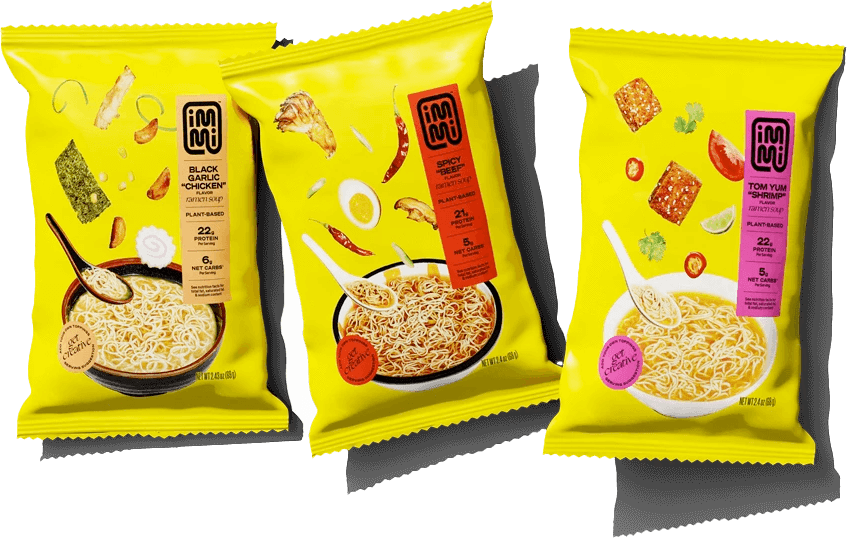Try Fresh Immi Ramen — Cooks In Just 7 Minutes!
Variety is the spice of life. Get all three flavors including Spicy Beef, Black Garlic Chicken, and Tom Yum Shrimp. You’ll be covered for all occasions. 

After that, the noodles are dried out by blow drying or deep-frying. Because instant ramen has such a low water content and is therefore such a shelf-stable product, removing moisture is a crucial step in the ramen-making process.
As it happens, ramen loses all of its moisture when it is deep-fried. Additionally devoid of moisture, blow-dried noodles are frequently the least desirable option. Once the noodles are dehydrated, they’re finally packaged for shipping. As you can see, the last few stages of preparation ensure that the ramen is cooked through. Although raw instant ramen may have a slight crunch, its complete dryness is what keeps it hygienic and virtually risk-free.
Can you eat RAW ramen??
Disclaimer: When you use the affiliate links to make a qualifying purchase, I receive a small commission at no extra cost to you.
The short answer is yes. But the long answer is that there’s really no problem with eating raw ramen because it has been pre-cooked via steaming or boiling then dehydrated or fried like so, so it can be packaged, distributed, and sold. That’s how instant ramen noodles are made and it’s really no different to how chips or crackers are made!
This also explains why boiling instant ramen with the flavor packet only rehydrates it, making it a simple dish to prepare.
How Fresh Ramen Noodles Are Made
If you’ve ever had handcrafted ramen noodles (probably at a restaurant), you are aware of how much chewier and more tender they can be. The primary distinction between the preparation of fresh and instant ramen lies in the fact that the latter isn’t dried out and keeps its chewy, soft consistency. Naturally, different recipes for homemade ramen noodles have different ingredients. For example, some call for baking soda and vital wheat gluten instead of kansui, while others only call for flour, baking soda, and warm water.
The reason fresh ramen noodles may taste better but are less safe to eat raw is because they lack this final dehydration step; fresh, doughy ramen noodles are raw and uncooked. Only the dough is combined, kneaded, and formed into long noodles. They are not air dried, deep fried, or steam-cooked. They’re consequently not as safe to consume before boiling.
